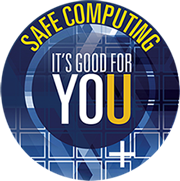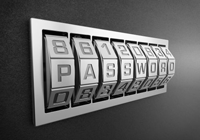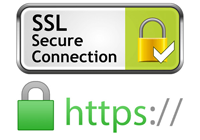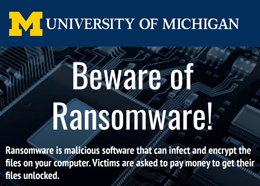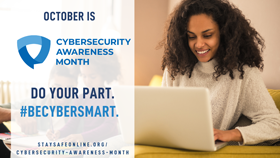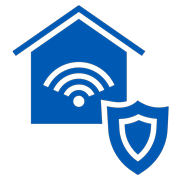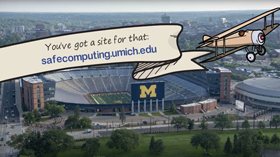The COVID-19 pandemic has not slowed down cybercriminals and other threat actors. If anything, the resulting move to remote work and study has left some computers more vulnerable. Phishing, ransomware, and other attacks continue to increase, with universities, school districts, government, and health care targeted.
“Strategic investments to improve security were needed more than ever,” said Sol Bermann, chief information security officer and executive director of ITS Information Assurance (IA). “To help you protect U-M and your unit’s data and systems from increased risks, we are excited to be rolling out CrowdStrike Falcon for enhanced endpoint protection and Virtru, a new email security tool.”
CrowdStrike Falcon
This fall, the university is replacing its existing anti-malware software for university-owned computers (Sophos for Mac, Microsoft Defender for Windows, and ClamAV for Linux) with CrowdStrike Falcon, an enhanced endpoint protection solution for laptops, desktops, and servers. Falcon, already in use on MiWorkspace and many MiServer machines, provides antivirus, anti-malware, and threat detection and mitigation capabilities, all of which provide even stronger protection against ransomware than previous tools. ITS IA is working with units across the UM-Ann Arbor, UM-Dearborn, and UM-Flint campuses to implement the new endpoint protection; Michigan Medicine uses a different solution. Watch for more information in the coming months.
Virtru
U-M faculty, staff, and students can add an extra layer of security to their U-M GMail email messages by using Virtru, which provides end-to-end encryption for email, and more! Virtru also lets you see whether the recipient has opened the email, set an expiry date beyond which the email cannot be read, and revoke the ability to read an email after it has been sent. Watch for broader communication about Virtru as we move into National Cybersecurity Awareness Month in October. Virtru is available now. For details, see:
- Virtru: Added Security for Your U-M GMail (on Safe Computing)
- Virtru Enhanced Email Security for U-M GMail (printable one-page handout)
- Sensitive Data Guide: Virtru at U-M


